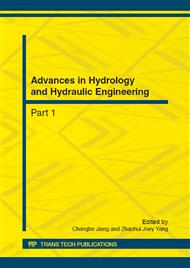p.1034
p.1043
p.1048
p.1057
p.1062
p.1067
p.1071
p.1076
p.1083
The Non-Equidistant Grey GRM(1,1) Model Based on Reciprocal Accumulated Generating
Abstract:
Applying the reciprocal accumulated generating and the constructing background value of non-equidistant sequence of GRM(1,1) model based on fitting the first accumulated generating sequence with non-homogeneous exponential law for the problem of lower precision as well as lower adaptability in non-equidistant GM(1,1) model, the calculation formulas were deduced and a non-equidistant GRM(1,1) model generated by reciprocal accumulated was put forward. The grey GRM(1,1) model can be used in non-equidistant interval & equidistant interval time series and has the characteristic of high precision as well as high adaptability. Example validates the practicability and reliability of the proposed model.
Info:
Periodical:
Pages:
1062-1066
Citation:
Online since:
October 2012
Authors:
Price:
Сopyright:
© 2012 Trans Tech Publications Ltd. All Rights Reserved
Share:
Citation:


